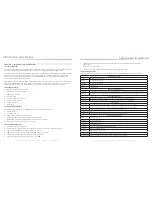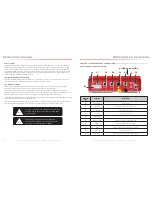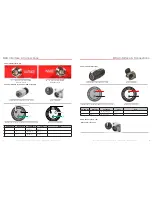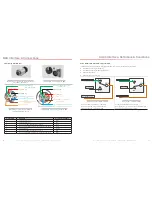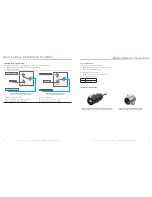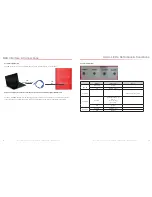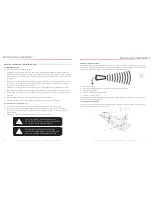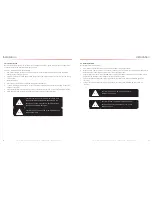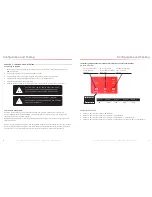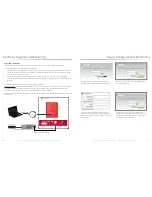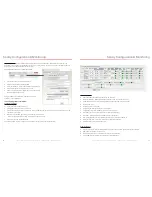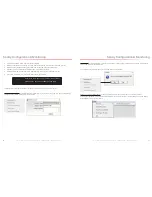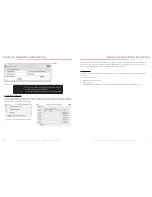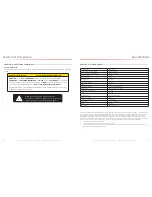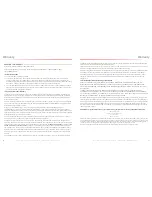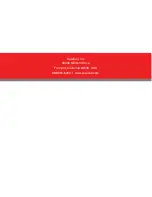
SureCall | 48346 Milmont Drive, Fremont CA 94538 | 1-888-365-6283 | [email protected]
SureCall | 48346 Milmont Drive, Fremont CA 94538 | 1-888-365-6283 | [email protected]
17
16
Planning the Installation
CHAPTER 3: PLANNING THE INSTALLATION
3.1 Installation Overview
Typically, a BDA installation follows these steps:
1. Choose a mounting location for the exterior antenna.The recommended SC-288W Yagi directional antenna is,
pointed directly at the radio tower (line of sight). The antenna is typically mounted on the wall or roof of the side
of the building with the strongest signal. A grounded lightning protector is required between the exterior antenna
and the BDA.
2. Next, choose the mounting location of the interior antenna(s), being sure to take separation requirements into
account. Long, narrow spaces benefit most from directional flat-panel antennas, while more square spaces
benefit more from omnidirectional dome antennas.
3. Choose where to mount the BDA. This should be in a secure indoor location near a grounded power source.
4. Map the cabling route between the exterior antenna and the BDA and between the BDA and interior antennas.
5. Proceed with a ‘soft installation’ connecting components without securing their placement until testing can be
completed.
6. Power on the BDA and perform configuration and testing explained in Chapter 5.
7. Complete installation by securing the placement of the BDA, antennas and other components,
Important Installation Safety Precautions:
• The exterior antenna must not be co-located or operating in conjunction with any other antenna.
• Always use a properly installed SureCall lightning protector between the exterior antenna and the BDA.
• Always power off the BDA before working on the roof of the building, or anywhere in close proximity to the
external antenna.
• Comply with all antenna separation requirements to prevent signal oscillation.
CAUTION: FAILURE TO PROPERLY INSTALL A
LIGHTNING PROTECTOR CAN RESULT IN DAMAGE
TO THE BDA, ANTENNAS, AND WIRING.
CAUTION: SIGNAL OSCILLATION CAN CAUSE
RADIO INTERFERENCE WITH RADIO TOWERS AND
RESULT IN CIVIL AND/OR CRIMINAL PENALTIES.
3.2 Exterior Antenna Overview
The recommended Yagi antenna (SC-288W) receives and transmits signals over a focused area. It must be aimed
directly (line of sight) toward the radio tower that provides the strongest signal to the building. The exterior antenna
and mast (if any) must be mounted in a location that meets all of the following criteria:
• Best signal strength.
• Not co
-
located with other antennas or used in conjunction with other antennas.
• Away from all power lines.
• At least 6 ft. from lightning rod antennas.
• At least 8 in. from any person
.
These distances are general guidelines only. Refer to the applicable building and electrical codes in your area to
determine specific local requirements.
3.3 Interior Antenna Overview
You may use any combination of omnidirectional (dome) and/or directional (flat panel) interior antennas to obtain
balanced signal strength throughout the structure.
Planning the Installation



